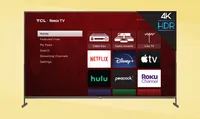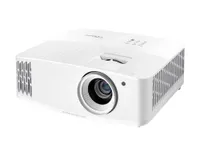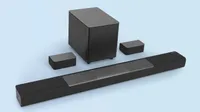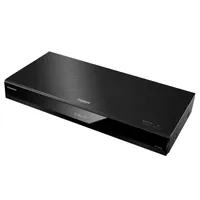How to build an amazing home theater for less
You can get a basic home theater setup with a big screen and surround sound for less than you'll spend on some premium TVs
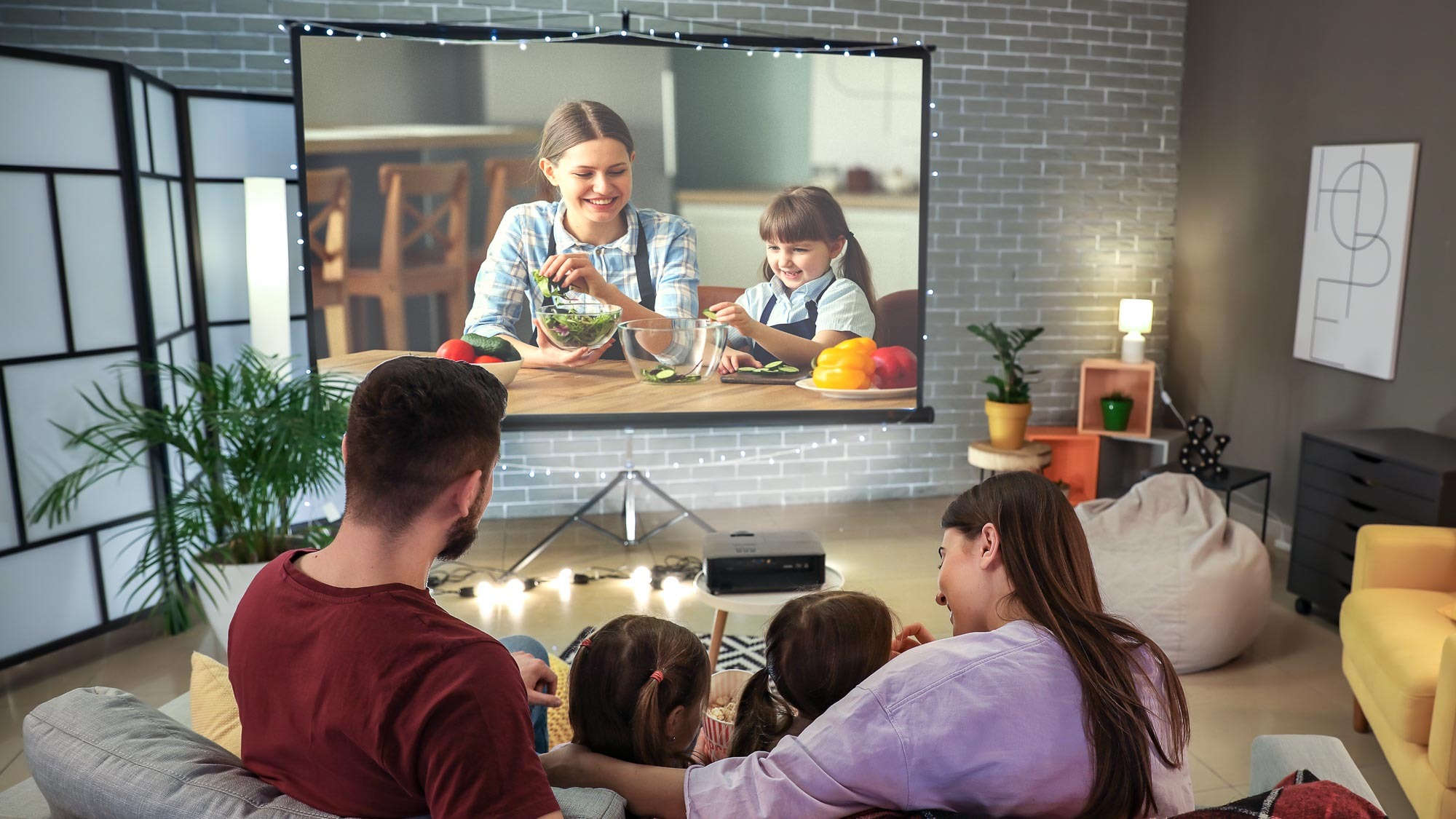
For the movie lover or tech enthusiast who wants to upgrade beyond the basic smart TV, there's nothing more enticing than the home theater.
However, a home theater can be intimidating. With a huge range of products (some necessary, some not), a dizzying array of technical details and formats, and an endless number of aesthetic options for optimizing your theater space, a good home theater is as much a hobby for some as the movie watching that happens inside.
- These are the best TVs overall
- TV buying guide: 9 things you need to know
You can spend thousands on a home theater set up. Scratch that, you can spend tens of thousands on individual pieces of home theater equipment. And people have. Budget options range from affordable to affordable-only-to-movie-stars, with some people building literal movie theaters in their homes, complete with theater-grade projection equipment and custom architecture.
So what about building a home theater on a budget? If you have, say, $3,000 to spend, what can you do to elevate your spare room or fulfill that unrealized home theater dream?
Well, you're in luck. The basics of every home theater are pretty simple, and we've worked out some recommendations that will give you a solid start to a great home theater, without blowing your budget.
Home theater basics
At the core of every home theater is the desire to recreate the cinematic experience of the movie theater in your home. And while you're entirely free to replicate everything from the smell of popcorn to the velvet upholstered theater seating, the essential pieces are far more basic.
You need a display. You need sound. You need media. Everything else will build upon this foundation, adding fine detail and immersive elements to the movie-going experience, but never eliminating or replacing this trio of functions.
Get instant access to breaking news, the hottest reviews, great deals and helpful tips.
To get more specific, you want a larger-than-average screen, because the average TV doesn't go far enough to replicate the theater-going experience. You want more immersive sound than the built-in speakers of a TV can provide, so you'll need some kind of speaker system. And finally, you need a way to play movies, and do so with the necessary resolution and picture quality to make the most of your fancy display and speaker system.
Plenty of home theater geeks will dive much farther down the rabbit hole, with recommendations for power sources, theater seating, acoustic treatments and much, much more. But for setting up your own home theater, you don't need to worry about all that at the start, and you can always add that stuff later.
Budget home theater: Budget breakdown
While it's entirely possible to blow past the $3,000 mark on any one piece of home theater equipment, we've found some solid value options that let you stretch your dollar, and even leave enough left over to pick up a few 4K Blu-ray movies for your first big movie night.
Here's how the budget is divided up:
- TV: Under $2,000
- Sound system: Under $500
- Media player: Under $500
For this project, we focused on finding a great big screen option, ranging from 4K 75 and 85-inch TVs up to 100+ inches with a 4K projector. No matter how big the room, we've got a great-looking display option that comes in at under $2,000 — less than you'll pay for many regular-sized premium smart TVs.
We also have a basic sound system that offers soundbar, subwoofer and satellite speakers for true surround sound, without needing extra equipment or a lot of fussing with connections and settings.
Finally, we have some solid media players, with affordable and mid-range 4K Blu-ray player choices, as well as non-Blu-ray alternatives that won't eat up the rest of your budget.
Let's talk about each piece of the home theater puzzle, what we took into consideration, and what we recommend for each.
Budget home theater: TV
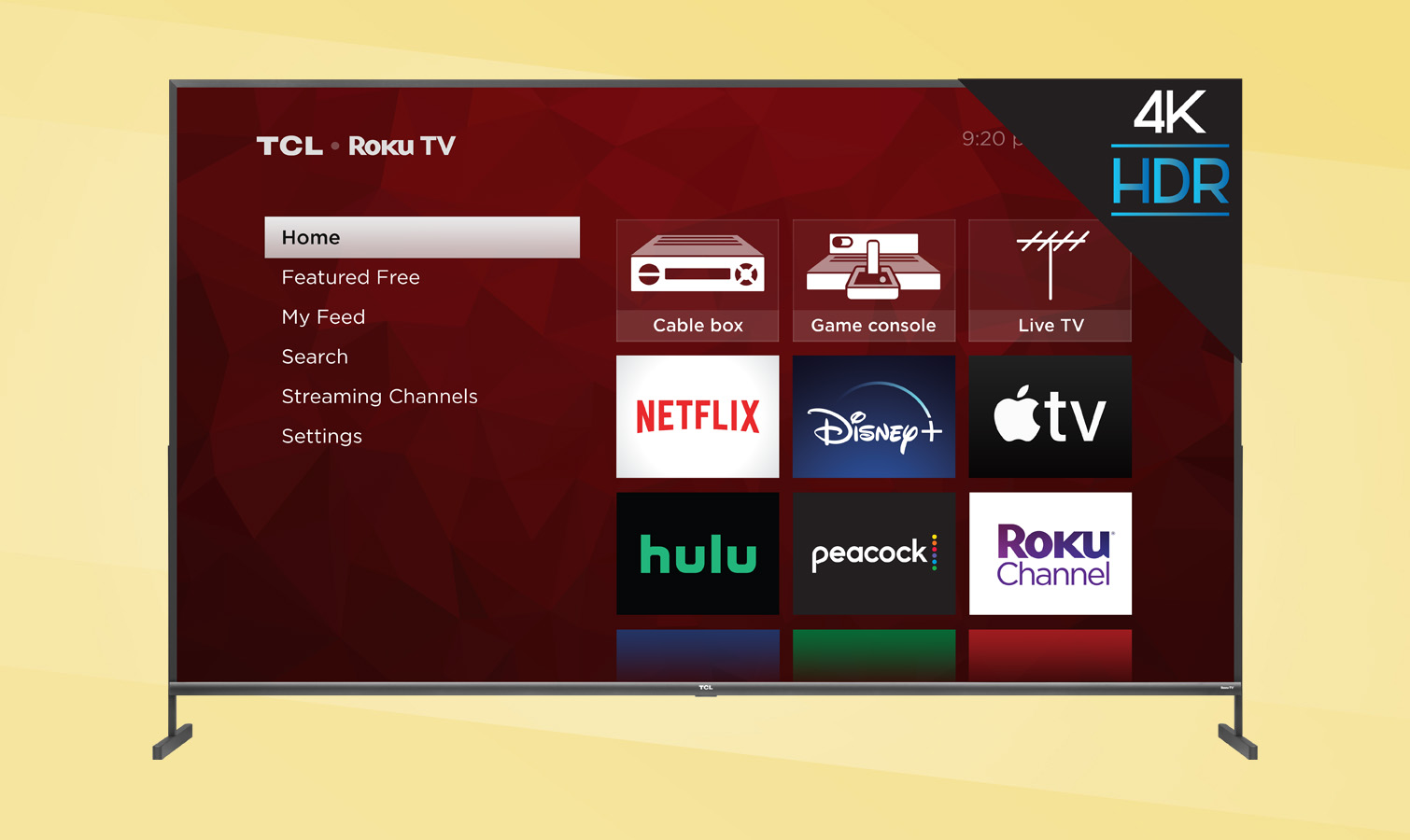
For a real theater experience at home, there's no beating a really big screen. In a commercial theater, you'll usually be watching on a screen that's anywhere from 30 to 90 feet wide by 10 to 30 feet tall. You're not going to find any options that big for your home (none that are affordable, anyway), but the size isn't the real question here.
Instead, you want to fill the same field of view that the theater screen offers, but at a shorter distance. The Society of Motion Picture and Television Engineers (who have done plenty of research on the subject) suggest that the ideal field of view for movie watching is between 35 and 55 degrees. That makes it a question of both screen size and seating distance, which we'll discuss below. In any event, something larger than the average 65-inch TV is usually called for, unless you're making a theater for only two or three people, and don't have much space.
Next is the issue of resolution. Thankfully, this isn't a difficult question to answer: You want 4K. Full HD was once the gold standard, but that was years ago, and 4K TVs and projectors offer fantastic picture quality at really affordable prices.
8K, on the other hand, may impress you on the sales floor, but you'll quickly discover that there's next to nothing you can actually watch in 8K. YouTube is the current leader in 8K content, but the pickings are pretty slim. Until major movie studios start releasing 8K media — and there's still no common format for 8K content — there's just no reason to shell out thousands of dollars for what will amount to a more expensive 4K TV in actual use.
TV or projector?
When it comes to what kind of screen is best, home theater enthusiasts have been debating for a long, long time. Some prefer the picture quality afforded by the latest big screen TVs. Others demand the darkened room and projected image of the movie theater.
There are genuine technical issues supporting each position, but for our purposes, it's really just a question of screen size and field of view. To simplify the above discussion of field of view, we've run some basic calculations.
For a seating distance of 8 to 12 feet, a 75-inch screen is perfect. Step up to an 85-inch screen if you have another foot or two, between 9 and 14 feet. For either of these sizes, a TV will probably offer the best combination of picture quality, features, and smart TV functions. You can go bigger, but it will cost far more than the basic budget we're working with.
Our favorite value-focused TVs come from TCL. With a great blend of picture quality, excellent features and decent Roku TV smart functions, they're the perfect options for anyone looking to go big without getting hammered on price. If you have more of a budget to work with, definitely check out the top picks on our best 75-inch TVs and best 85-inch TVs, but these are the budget-friendly recommendations. If you want a big 4K TV for under $2,000, these are our favorites:
TCL 6-Series Roku TV (75R635)
One of the best big-screens you can get for under $2,000, the TCL 6-Series Roku TV 75R635 offers a big, beautiful 75-inch screen that combines QLED brightness and color with the superb backlighting offered by mini-LED. There are better TVs out there, but nothing comes close to the combination of size, performance and price.
TCL 4-Series Roku TV (85S435)
While it's not as technically advanced as the 6-Series model we recommended, the 4-Series Roku TV is one of the most affordable 85-inch 4K TVs on the market. It has good color accuracy and supports HDR10 — but not Dolby Vision — for improved contrast. It lacks local dimming, so the HDR performance isn’t as good as it could be. Roku’s smart TV software provides a great smart TV experience. With a low lag time of 14 milliseconds, this set also will handle fast-paced gaming well.
Budget home theater: Projector and screen
For anything larger, you'll want a projector. Home theater projectors can produce a range of screen sizes, but for most, the screen size will top out between 100 and 120 inches — anything bigger requires vaulted ceilings or other accommodations. If you can go bigger, you're in luck, because a good 4K projector can often go much larger, up to 300 inches.
Though we don't generally test and review projectors, we've done more than our fair share of research about them. There are plenty of options for 4K home theater projectors, and you can easily spend a lot of money — the Sony VPL-VW1025ES 4K SXRD Home Cinema Projector sells for $39,999, for example — but we want to keep a budget similar to our TV picks.
For that, we like the Optoma UHD38, a true 4K UHD projector that can handle both movie watching and gaming thanks to lightning-fast input lag and a max refresh rate of 240Hz. It handles high dynamic range (HDR) content and is even bright enough to view with all the lights in the room turned on.
Optoma UHD38 4K projector
The Optoma UHD38 is an affordable 4K projector that boasts HDR support, and even high-frame rate gaming. With the ability to project a picture of 100-inches and larger — up to 300 inches, even — it's a great budget-friendly home theater projector.
We pair this with the Elite Screens M120H 120-inch pull down projector screen, which gives you a huge viewing area, maintains the projector's intended brightness and color, and looks great from several angles. And at less than $200, the price is right for your budget home theater.
Elite Screens M120H Manual 120-inch projector screen
A good projector needs more than a bedsheet or a blank wall to look its best. The Elite Screens M120H is a manual pull-down screen, offering the best surface to preserve the brightness, color and HDR capability of your projector. And with 120-inches of screen space, it's a giant that dwarfs any regular TV you can buy.
Budget home theater: Sound system
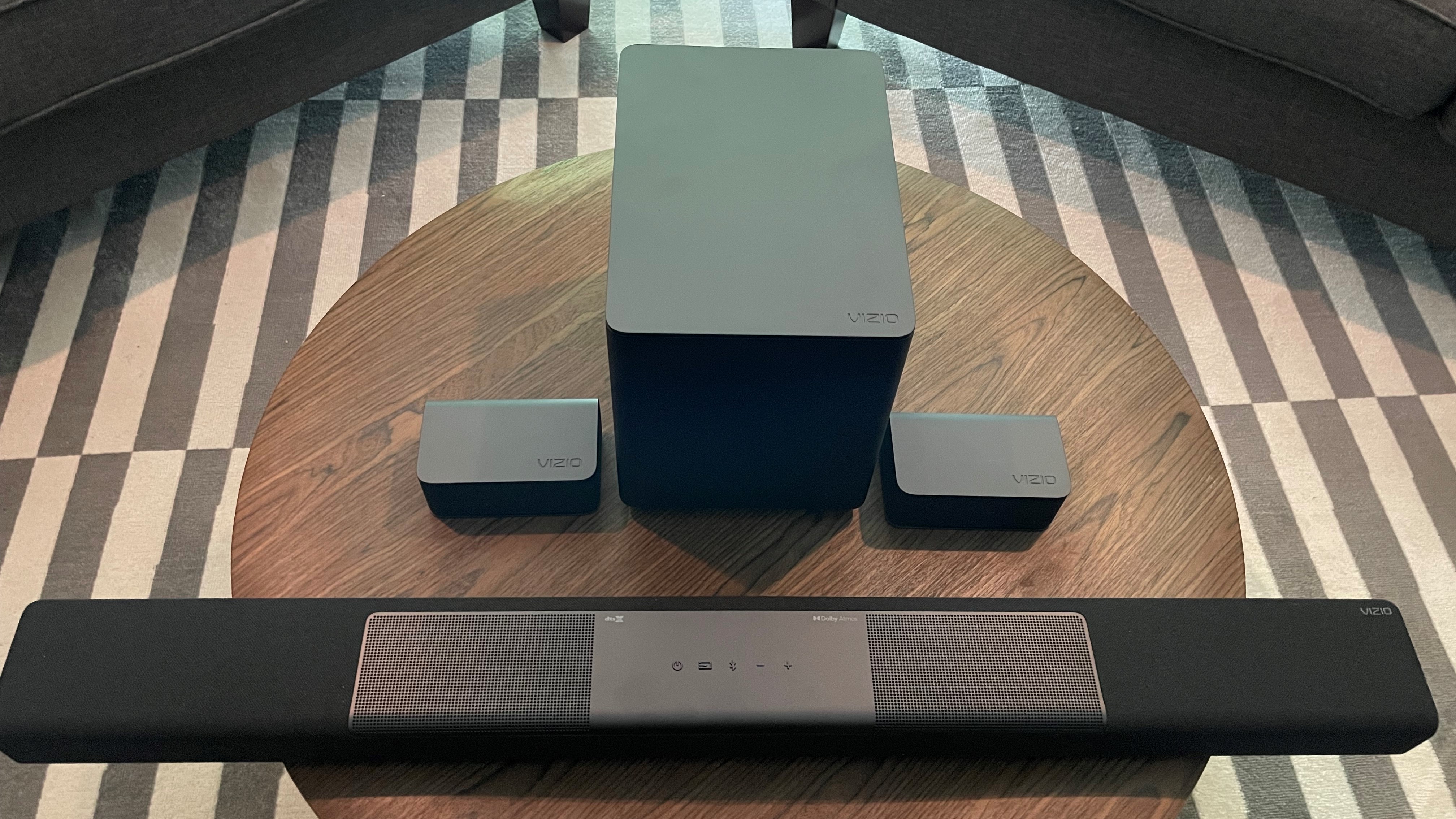
In many ways, the sound system is what makes a home theater, just as much as the screen. In fact, searching for home theater systems won't bring up TVs or projectors at all, but rather sound systems, built to replicate the multi-speaker setup of a theater.
The stereo speakers built into most TVs are notoriously lackluster, but for a home theater, they definitely will not cut it. Even those TVs with more complex built-in sound can't do much more than simulate right and left channel audio, and perhaps a center channel between them. The must-have element here is multi-channel sound. For a proper theater experience, you need more sound, coming from more sources.
And that means adding extra speakers. Speakers in front, speakers to the side, speakers behind, a subwoofer to give it all weight and heft, and speakers above to add verticality and immersion.
Like any part of the home theater world, sound systems are a rabbit hole that you can explore endlessly. And there are other far more technically minded publications that focus on all of the finer points of multi-channel sound, encoding formats, and various pieces of hardware you can use to get multiplex sound in your home.
But for our purposes, we're looking at ready-to-use surround sound systems. Specifically, we turned to our selection of the best soundbars, which offer simple, no-hassle packages that can be easily connected directly to the TV. But a basic soundbar doesn't do enough; we need those extra speakers and subwoofer.
For this, we turn to the Vizio M-Series M512a-H6, a soundbar that offers true Dolby Atmos, with upfiring speakers instead of simulated Atmos effects, a pair of surround speakers and a subwoofer that delivers big bass. It's a full 5.1.2 system that can connect easily to your TV for simple setup and full-featured sound, and it sells for less than $500, keeping us right in budget.
Vizio M-Series M512a-H6
Vizio offers a true Atmos surround sound system — all for a relatively cheap price. With a soundbar that features upfiring speakers for Dolby Atmos, a pair of surround speakers and a subwoofer that delivers big bass, you'll have a full 5.1.2 system that can connect easily to your TV for simple setup and full-featured sound.
Budget home theater: Media source
Finally, with a great big screen and room-filling sound, you're ready to start watching some movies. But you need something to play those movies on.
This is the only portion of the home theater trifecta that could be considered optional. Not because you don't need a way to watch movies, but because both TVs and even some sound bars now have streaming options built in.
But for a real cinematic experience, you probably want to get movies in the best quality available, and that means 4k ultra HD, and that usually means a 4K Blu-ray player.
Panasonic DP-UB820 4K Ultra HD Blu-ray player
The Panasonic DP-UB820 is one of the best 4K Blu-rays you can get, but it's a heck of a lot more affordable than most top-flight players. The player boasts support for Dolby Vision and other HDR formats, Dolby Atmos and 7.1 channel sound, and plenty of features, including built-in support for streaming apps. It's a killer option for home theaters, especially at this price.
There's also the option of a game console — we recommend the Xbox Series X for home theater types, since it has a Blu-ray drive and more media features, but the PS5 can also serve as both a game console and home entertainment center.
The biggest issue with the latest game consoles isn't that there's any particular problem with the devices, but that they're still so hard to find, even as we approach a full year since the new systems launched. If you do decide to kit out your home theater setup with a console, we've got pages covering the latest PS5 restock and Xbox Series X restock to help you out.
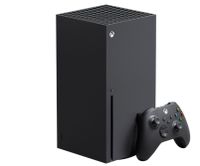
Xbox Series X
It's hard to overstate how excellent the flagship Xbox game console is. With 4K resolution gaming at 60 frames per second, and a huge library of games (including the all-you-can-eat buffet of Xbox Game Pass) it's a killer gaming machine. But it's also a richly featured media player, with 4K Blu-ray support, every streaming option you could want, and support for Dolby Vision and Dolby Atmos.
But not everyone wants or needs a Blu-ray player. There are plenty of great options on our list of the best streaming devices, including premium options that let you stream in 4K, with HDR and multichannel sound. And if you don't need to play physical media, they're a heck of a lot cheaper — under $200 for even the best devices and under $50 for the likes of the Roku Streaming Stick Plus.
Even better, if you have a smart TV as your display, you've already got a good platform for streaming. In addition to all of the free content options that are available on these devices, there are streaming services that deliver 4K resolution, HDR content and multichannel sound, all without needing any extra hardware.
Budget home theater: Going above and beyond
With the three main elements covered, and most of your budget spent, you've got the basis of a great home theater. But you can step up the quality of your experience with a little work and some planning.
Here are a few suggestions to help you enhance your home theater setup without spending a ton of money.
TV mount
One of the best TV mounts will let you put that big screen TV on the wall and find the perfect viewing angle, as well as letting you maximize the space in smaller rooms. Selling for less than $100, you should be able to fit one in your budget and get the TV mounted in an afternoon, following our handy guides Mounting your TV: Best viewing angle and height and How to mount a TV to the wall in 8 easy steps.
Dimmable lighting
One perfect way to set the mood for a movie is to dim the lights before showtime. While that used to require wiring in a special dimmer switch, now you can do it with just a few smart lights and a smartphone.
Check out the best smart light bulbs and the best smart light switches to find a whole range of affordable lighting solutions for your home theater.
Universal remote
Between the TV, soundbar and Blu-ray player — plus any other media devices you might already have — you've already got a good collection of remote controls to deal with. Simplify matters by getting one of the best universal remotes to control your entire home theater.
Seating and placement
Finally, one of the best things you can do is to properly arrange the seating in the room, placing it the ideal distance from the TV to maintain a large field of view and comfortable viewing angle for the screen, and then placing and calibrating your sound system around those same central seats.
Whether it's a comfy couch, a beanbag chair for every member of the family, or more premium home theater seating, you'll benefit more from proper seat placement than from spending a lot. For a little extra money you can get footrests and cup holders, but proper placement ensures you get the best seat in the house.
Get the right advice for placing seating in our article What size TV should you buy?
Brian Westover is currently Lead Analyst, PCs and Hardware at PCMag. Until recently, however, he was Senior Editor at Tom's Guide, where he led the site's TV coverage for several years, reviewing scores of sets and writing about everything from 8K to HDR to HDMI 2.1. He also put his computing knowledge to good use by reviewing many PCs and Mac devices, and also led our router and home networking coverage. Prior to joining Tom's Guide, he wrote for TopTenReviews and PCMag.

